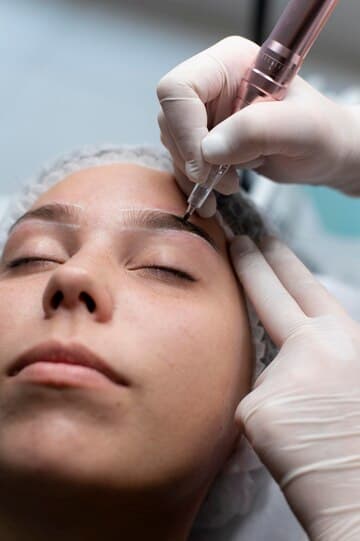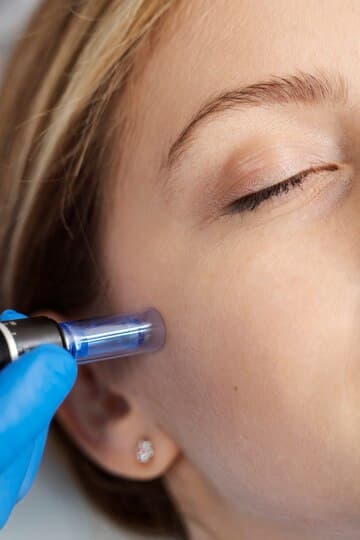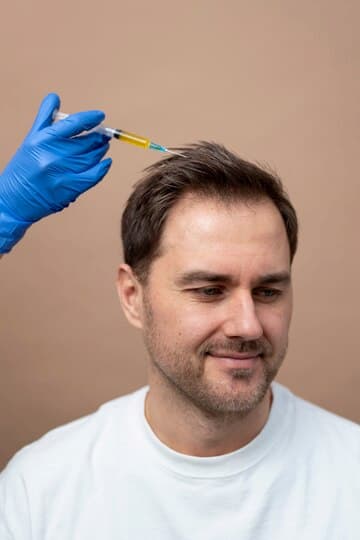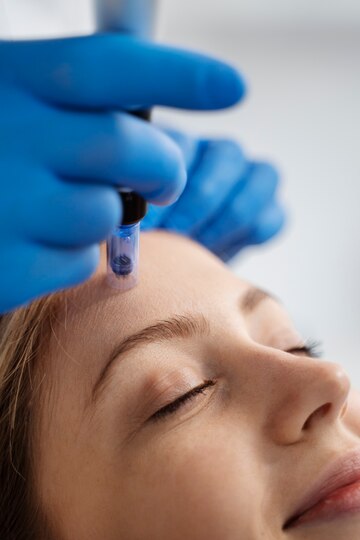- 10400 CONNECTICUT AVE STE 206 KENSINGTON MD 20895-3941
- 301-260-2601
A PDO thread lift is a revolutionary new treatment in the world of aesthetics, but PDO threads themselves have been used safely for decades for various applications, like treating gynecological disorders or suturing incisions after medical procedures. When used as an aesthetic treatment, there are a few things you should know.
First, it mechanically results in instant skin lifting. Second, it contracts fat tissue to result in instant skin tightening. Third, it promotes collagen production and neovascularization to renew your skin at the cellular level. All of this works together to give you enhanced skin texture, fewer fine lines and wrinkles and more elastic skin.
One of the best things about this treatment is it only takes 15 to 30 minutes. After that, you’re free to go back to work or whatever else you had scheduled for the rest of your day.

Before treatment starts, we will apply a topical numbing agent and local anesthetic to the treatment site. The needle used during this treatment is so fine it will not cause any pain. However, we provide anesthesia to ensure you feel no discomfort during the treatment.
Once the anesthetic has taken effect, your treatment will begin. The PDO threads are inserted via blunt tip needles, called cannulas, or sharp-tipped needles. Once inserted into the appropriate layer of skin, they act as anchors as the skin is lifted upwards. Then, the excess threads are cut off.
There are several types of PDO threads, and each serves its own unique purpose. Depending on your aesthetic goals, your PDO provider may use one or many thread types during your anti-aging treatment.
There are two primary types of PDO threads, These are floating non-barbed threads and floating barbed threads. Sub-classifications of non-barbed threads include braided threads and mono-filament threads. Sub-classifications of barbed threads include:
You may hear PDO threads described with names such as “heart barbs”, “tornado” or “double screw”. These are all references to various barbed PDO threads.
It absolutely matters what type or types are PDO thread is used during your PDO thread lift. Besides the distinct difference in shape, PDO threads come in varying lengths and thicknesses. Factors affected by the type of thread used include tensile strength, efficacy, quality and cost of treatment.
This treatment is completely safe. It is approved by the FDA for safety and efficiency. Moreover, hundreds of thousands of treatments have been performed and there are no reports of allergic reactions, sensitivities to the threads, or serious side effects or risks.
Since PDO thread lifts are non-invasive, there isn’t a lot you need to do to prepare. However, there are some precautionary measures you can take to ensure the best results from your treatment. Here are things you should avoid one to two days before treatment:


There are not a lot of special after-care requirements to this treatment. However, you should hold off on any dental treatments for the first two weeks after your PDO thread lift. Holding your mouth open for an excessive period of time can affect the results of your treatment. Moreover, you’ll want to sleep on your back for the first couple of weeks. This ensures you don’t put too much pressure on one side of your face.
A PDO thread lift is customized to your unique skin type, skin texture and aesthetic goals. Depending on the area you want treated, you may receive three or four carefully placed barbed threads. Different threads are used for varying degrees of lift, skin tightening and cellular rejuvenation.
Because a PDO thread lift is so versatile, it can treat virtually any area of the face. These include the:
The cheeks and the lower face/neck region are the most commonly treated. The cheeks and lower face are great regions to treat because they lend themselves so well to synergistic skin lifting treatments like Ultherapy.
How long the PDO threads last depends on a number of factors, including the thickness of the threads, the quality of the threads and your body’s rate of metabolism. However, most of our clients find that the threads have dissolved within six to nine months.
Some results of the treatment, such as skin lifting and some of the contouring effects, are visible immediately after treatment. In fact, your skin may look tighter when you walk out of our office than it will a week later.
The final results of your PDO thread lift will be seen within one to two months of your treatment. How long it takes you personally depends a lot on your age. Your age is one of the leading factors in how quickly your body produces new, healthy collagen. Collagen is the protein responsible for plumping up your cheeks, filling in fine lines and smoothing out wrinkles.
Most of our clients enjoy satisfactory results after just one treatment. Come in six to nine months after your first treatment so we can determine if you need a follow-up treatment. After that, you shouldn’t need another treatment for three years.


Finally, because PDO threads are gentler on the skin, more threads are used during treatment than a Silhouette Soft thread lift. Thus, the skin is lifted higher and more comfortably.
The best complementary treatments to your PDO thread lift depend on the results you’re looking to achieve. If you are extremely concerned about lines and wrinkles exacerbated by facial motions, neuromodulators work best. If you’re more worried about static lines and wrinkles, dermal fillers are the perfect complement for your PDO thread lift.
PDO thread lift cost depends on several factors. To determine if a PDO thread lift is right for you, contact Dr. Bloem’s office to schedule your initial consultation.